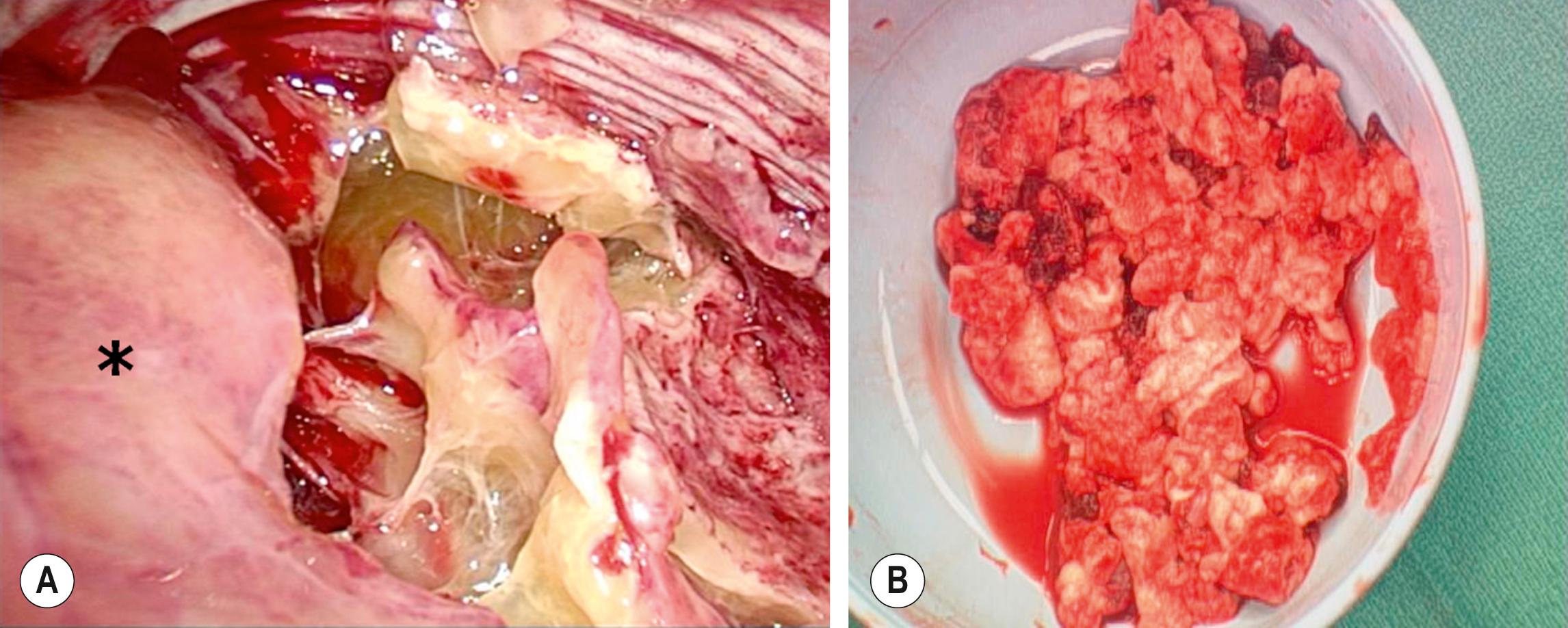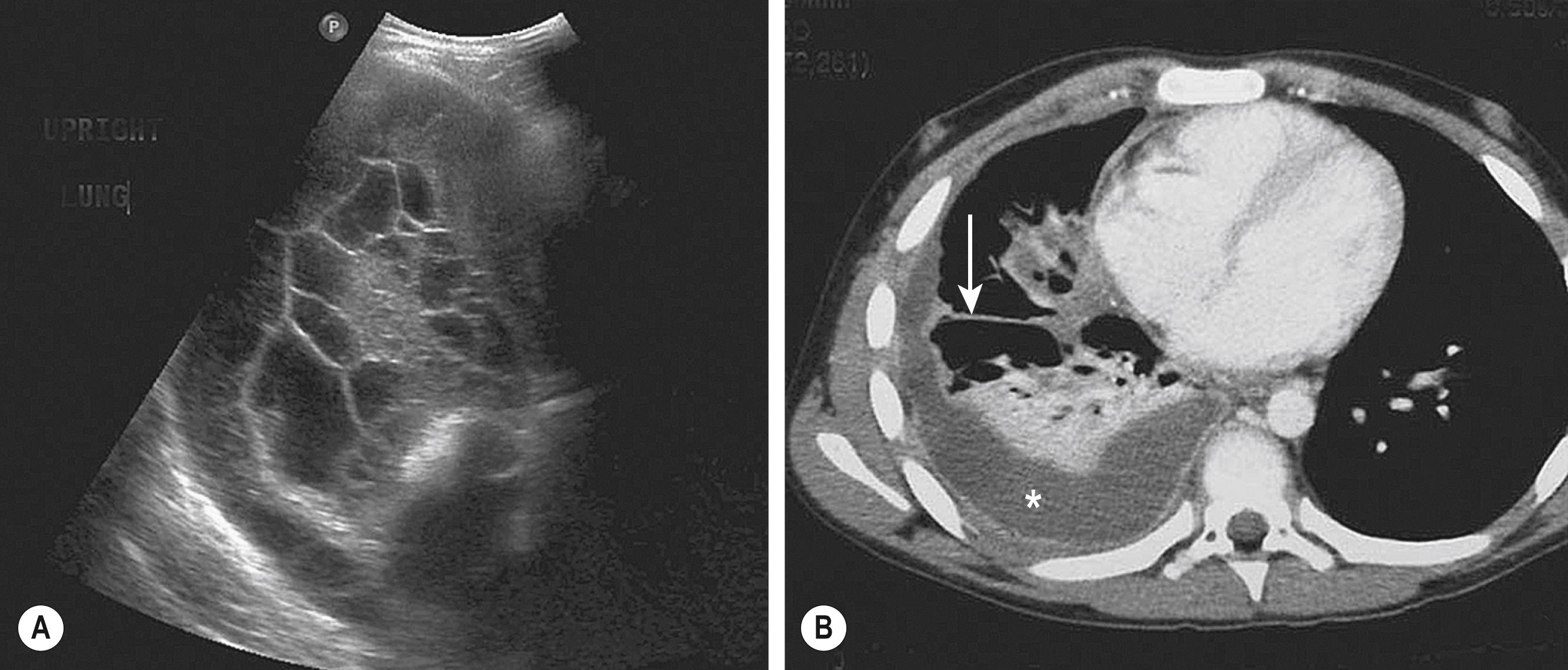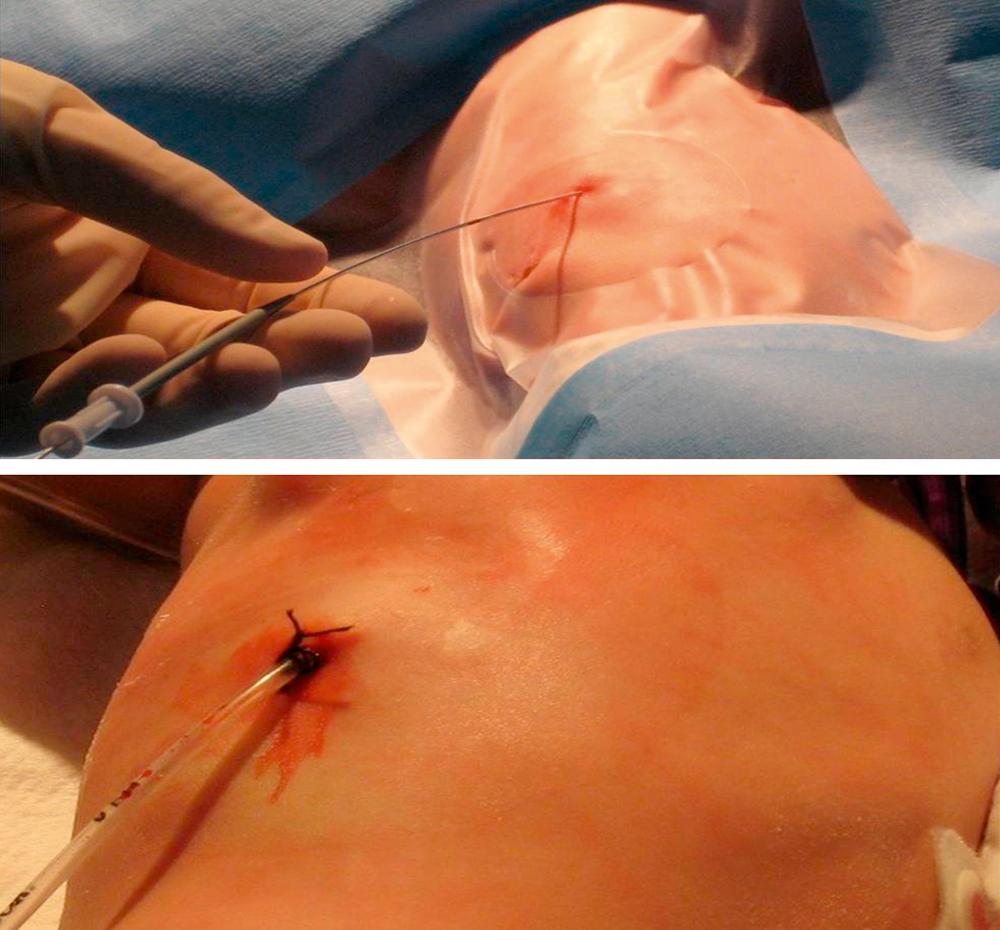Physical Address
304 North Cardinal St.
Dorchester Center, MA 02124
Empyema is one form of a parapneumonic effusion (PPE) and is defined as the accumulation of pus in a body cavity. The word empyema is derived from the Greek word empyein , which means to “put pus in.” In medical terminology, it refers to pus in the pleural space. The most common etiology for a PPE is a reaction to adjacent pneumonia. However, other sources include a reaction to a subphrenic abscess as well as extension of mediastinal, retropharyngeal, or paravertebral infections. PPEs can also develop secondary to infection after thoracic surgery or trauma.
Although overall rates of bacterial pneumonia have been declining in children, the incidence of complications such as PPEs and empyema has increased. In the United States, pneumonia in children occurs at an estimated rate of 30–40 per 100,000. PPEs can complicate pneumonia in up to 30–50% of children. In children <2 years of age, the incidence of empyema doubled over a 10-year span, increasing from 3.5/100,000 in 1996–1998 to 7/100,000 in 2005–2007. Similarly, in patients between 2 and 4 years of age, empyema rates nearly tripled from 3.7 /100,000 to 10.3/100,000 during the same time period. While PPEs and empyema in children are less serious compared with in adults, in whom the mortality can approach 20%, they still pose a considerable burden on hospitals and families.
The natural progression of parapneumonic pleural disease has been outlined with 3–4 stages of increasing complexity. The Pre-collection stage involves pleuritis and inflammation. This is followed by the Exudative stage, which is a simple PPE, and is characterized by clear, free-flowing pleural fluid with a low white cell count. The Fibrinopurulent stage is a complicated PPE (empyema), marked by the deposition of fibrin and purulent material in the pleural space, and an increase in the leukocyte count of the fluid. Septations and fibrin strands begin to develop. These result from decreased fibrinolytic activity, thereby allowing increased fibrin deposition. The result is a procoagulant environment that leads to the development of solid material in the form of septations followed by loculations of purulent fluid ( Fig. 23.1 ). The most advanced state is termed the Organization stage, during which a thick peel is established. This peel can entrap the lung and result in chronic restrictive lung disease. While these stages are described in sequential progression, there is no certainty that one stage will progress to the next. Although outlined as a simple progression, the degree of patient illness may not correspond with these stages and depends on the extent of the concomitant parenchymal disease and/or the inflammatory response to the infectious processes.

As the stages advance, the chemistry of the parapneumonic fluid changes: glucose decreases, pH decreases, and lactate dehydrogenase (LDH) rises. The Light criteria for complicated PPE include pH <7.2, LDH >1000 units, glucose <40 mg/dL or <25% of the blood glucose, Gram stain or culture positive, and with loculations or septations seen on imaging. Retrospective data suggest that a prolonged fever and a low pleural fluid pH and glucose, along with a high LDH pleural/serum ratio, are associated with more severe disease. Another study, using multivariate logistic analysis of a retrospective dataset, found that a pleural fluid pH <7.27 was the only significant factor for the formation of fibrin with/without septations. A third study suggested that a tumor necrosis factor level >80 pg/mL in the pleural fluid suggests a complicated effusion.
In his 1995 review, Light proposed a detailed classification that defines seven different stages ranging from nonsignificant PPEs to a complex empyema. Also, recommendations on appropriate therapy were described that ranged from observation to thoracoscopic debridement/decortication ( Table 23.1 ). A consensus statement from the American College of Chest Physicians has said that more interventional therapy is needed as the stage of effusion progresses. In another retrospective study, a pleural fluid pH <7.1 was found to result in a sixfold increase in the likelihood of operative intervention. Although all these criteria may document the physiologic progression of disease, the clinical relevance of a patient’s pleural fluid analysis may not be that important because once symptoms develop and fluid with or without septations is found, intervention is needed.
| Categorization | Pleural Fluid Findings |
|---|---|
| Class 1 | |
| Nonsignificant | Small |
| parapneumonic effusion | <10 mm thick on decubitus |
| Class 2 | |
| Typical parapneumonic effusion | >10 mm thick |
| Glucose >40 mg/dL, pH>7.20 Gram stain and culture negative |
|
| Class 3 | |
| Borderline complicated parapneumonic effusion | 7.00< pH <7.20 and/or LDH >1000 and glucose >40 mg/dL |
| Gram stain and culture negative | |
| Class 4 | |
| Simple complicated | |
| parapneumonic effusion | pH<7.00 and/or glucose |
| <40 mg/dL and/or | |
| Gram stain or culture positive Not loculated, no frank pus |
|
| Class 5 | |
| Complex complicated parapneumonic effusion | pH <7.00 and/or glucose |
| <40 mg/dL and/or | |
| Gram stain or culture positive Multiloculated |
|
| Class 6 | |
| Simple empyema | Frank pus present Single locule or free flowing |
| Class 7 | |
| Complex empyema | Frank pus present |
| Multiple locules | |
The diagnosis of PPE is usually a progressive clinical picture beginning with pneumonia. Patients with a significant PPE or empyema almost always demonstrate some degree of respiratory distress, malaise, persistent fever, or pleuritic chest pain. Diminished breath sounds with dullness to percussion on the affected side are found on examination. An ileus is common as is a lack of appetite.
Initial imaging is a chest radiograph that shows poor penetration on the affected side. However, it is often difficult to distinguish between parenchymal consolidation and pleural fluid on a plain film. In a retrospective review of over 300 adult patients, the chest radiograph missed all effusions that were significant enough to warrant drainage when compared with subsequent computed tomography (CT) scans ( Fig. 23.2B ). Decubitus films may be helpful in distinguishing between nonloculated and loculated effusions.

Ultrasonography (US) is portable, relatively inexpensive, and does not involve radiation ( Fig. 23.2A ). It is very sensitive in diagnosing loculated fluid and can be used to guide percutaneous drainage and catheter placement, if needed. Some authors suggest that US is superior to CT in the identification of pleural debris or loculations . , US can reliably differentiate between parenchymal and pleural based processes. A post hoc review of a prospective trial in children found that in 31 patients in whom both CT and US were performed, there was no advantage of CT over US in most cases. Two independent series reviewed the implementation of an algorithm using initial US in children with complicated pneumonia. Both demonstrated a significant reduction in hospitalization and a decrease in the use of CT without an increase in the rate of operative management or pleural drainage. A small retrospective review comparing US and CT found that CT had no advantage in most cases and suggested that CT should be used in complex cases only, such as patients undergoing operation or thought to have parenchymal abscesses or a broncho-pleural fistula. In addition, CT has been found to be inferior to US at demonstrating fibrin strands or septations within the pleural fluid. The main disadvantages of US appear to be lack of 24-hour US availability in many centers and being operator dependent.
Although CT with intravenous contrast can differentiate between parenchymal and pleural processes, the resulting radiation exposure has raised the concern for a long-term cancer risk. CT scans are the largest contributor of medical radiation in the United States, with approximately 5–9 million CT studies performed annually. Although there is no conclusive evidence that directly links radiation from diagnostic imaging to the development of cancer, studies have shown that even low levels of radiation exposure are associated with slight increases in cancer risk. Furthermore, radiation exposure is magnified in young children because of their smaller size when compared with adults.
After the diagnosis of PPE is made, the first branch in the management algorithm depends on the nature of the fluid. With a free-flowing effusion and no solid components or signs of purulence, the nature of the intervention will depend on the size of the effusion and the symptoms. Classifying the size is difficult to define precisely. However, in general, small effusions are defined as having <1 cm rim of fluid, moderate effusions have a 1–2 cm rim, and large effusions have a >2 cm rim on decubitus films.
A 12-year retrospective study in children classified small effusions as <¼ hemithorax opacification, moderate effusions as ¼–½ opacification, and large effusions as >½ opacification based on upright films. In this study, the authors found that small and most moderately sized effusions could be effectively managed without drainage and without an increase in the length of hospitalization or other complications, and suggested that intervention should be based on symptoms, not the size of the effusion alone. Symptoms leading to intervention generally are feeding intolerance, tachypnea, and an increasing oxygen requirement. A retrospective case series in children found respiratory distress on presentation was related to prolonged stay and a higher likelihood for intervention.
After deciding that drainage is needed, options include single or multiple thoracentesis versus tube thoracostomy or catheter drainage. A prospective, nonrandomized pediatric series compared treatment with repeated US-guided needle aspirations vs tube thoracostomy. There was a mean 2.4 drainages/patient in the aspiration group, but similar length of stay. Although this approach may be reasonable in an older child who can tolerate the procedures with local anesthesia, it would likely not be appropriate in younger children. The British Thoracic Society guidelines for adults recommend a chest tube for cases in which the first thoracentesis fails to adequately drain the effusion in order to avoid multiple thoracentesis attempts. A retrospective series compared 33 children who underwent chest tube placement on the basis of effusion size and/or thoracentesis fluid analysis versus 32 who were treated conservatively with tube thoracostomy only for progressive symptoms or mediastinal shift. The authors found no difference in the duration of hospitalization and suggested frugal use of chest tubes. In a series of 405 adult patients, 266 had a chest tube smaller than 14 French compared with 139 with larger tubes. There was no difference in the ability to drain the effusion. Furthermore, the smaller caliber tubes did not hinder the use of fibrinolytics. In a retrospective series of 20 children treated with standard chest tubes compared with 12 treated with pigtail tubes, no outcome differences were found. In patients with pleural effusions or empyema, we prefer the 12 French Thal-Quick chest tubes (Cook Critical Care, Bloomington, IN), which are inserted using the Seldinger technique ( Fig. 23.3 ). We have not felt it necessary to use image guidance in the majority of patients.

Become a Clinical Tree membership for Full access and enjoy Unlimited articles
If you are a member. Log in here